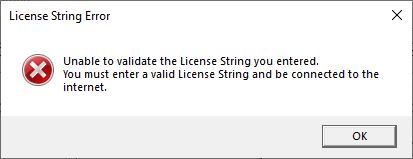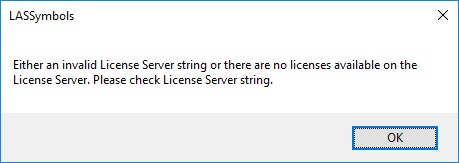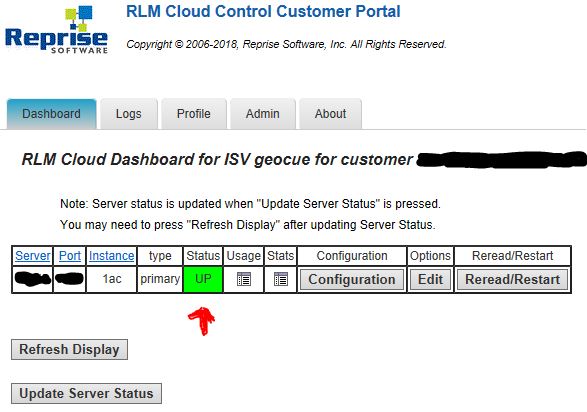Problem:
While entering the License String in the LP360 (or formerly TrueView EVO) License Manager you receive the error message, “LASSymbols: Either an Invalid License Server string or there are no licenses available on the License Server. Please check License Server string.”
Or, while entering the License String in the ASPSuite License dialog you receive the error message, “License String Error: Unable to validate the License String you entered. You must enter a valid License String and be connected to the internet.”

Probable Resolution #1:
Verify the License String entered matches what was provided. Be sure not to include the enclosing quotes.
An issue occurs when a user forwards the license e-mail, and their e-mail system/IT infrastructure automatically inserts a hyperlink for the server address where one should not exist. When forwarding/receiving e-mails with the license string, please verify that it is not altered from the original state. The typical License String has the form:
CUSTOMER <ISVAbreviation> isv=geocue server=ls24.rlmcloud.com port=5053 password=<password>
where, <ISVAbreviation> and <password> are unique per License String, and the server may be ls24, ls41, or ls60.
Probable Resolution #2
The error message is likely caused by the presence of a firewall in place that is stopping the connection between the client machine and the server machine. Test the ports using Microsoft’s PortQry utility. The steps below describe how to allow the necessary ports through for Windows Firewall only. If there is a separate firewall in place, local IT departments will need to be involved to allow the following ports through. If the ports need to be restricted, they only need to be open for outbound communications with the corresponding IP address for your server.
- TCP Ports #5053 and the client specific port as outlined in the license e-mail, or as seen when you log into your Customer Portal.
- From the Start Menu -> Control Panel -> System and Security, select Windows Firewall.
- On the side panel select Advanced settings.
- Select Outbound Rules.
- Right-click and select New Rule.
- Under “What type of role would you like to create?” select port and then next.
- Select TCP and then type in the port numbers (5053 and one more) under Specific local ports and select next.
- Select “Allow the connection”, and then select next.
- Select when the rule applies on which networks and/or domains and select next.
- Name the rule and click Finish.
- All ports necessary for communicating with your hosted License Server have now been allowed through Windows Firewall.
Probable Resolution #3:
When running LP360, some antivirus software may interfere with processing and cause license issues. It is recommended to put in place adequate exceptions for defender style programs running locally and on your network.
Probable Resolution #4:
Have your License Administrator log into the Client Portal, https://ls24.rlmcloud.com/rlmcloud or https://ls41.rlmcloud.com/rlmcloud or https://ls60.rlmcloud.com/rlmcloud, depending on the IP address in your license string, and verify the status of your license server. If the server is “DOWN”, click “Reread/Restart”, then refresh the page and when it says “UP”, try entering the license string again. If the status doesn’t change, contact [email protected]. If the server is already “UP”, click on “Usage” to verify available licenses.
Probable Resolution #5:
Do you use a proxy server to access the internet? If so, the licensing system does not handle that configuration. If you’re able to access the internet on a different network where a proxy server is not required, then you can check out a roaming license that way and it will roam for 30 days before you’ll need to connect in that manner again. If that isn’t an option, please contact us, [email protected] for assistance.

